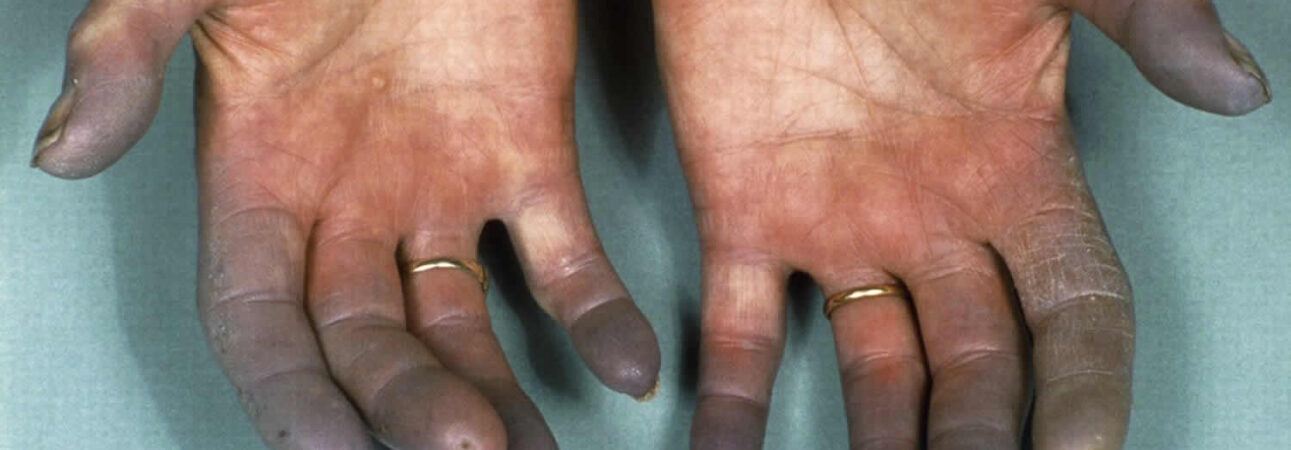Buerger’s disease attacks the arteries and veins of the arms and legs and is extremely uncommon. Blood vessels enlarge and become inflamed with Buerger’s disease, which is also known as thromboangiitis obliterans. It can lead to blood clots blocking the capillaries (thrombi).
There is a risk of infection and gangrene if skin tissues are damaged or destroyed over time. When Buerger’s disease develops, it generally starts in the hands and feet, but it can spread to other body parts, including the arms and legs.
Buerger’s illness is almost always associated with tobacco use, whether it’s cigarettes or chewing tobacco. To stop Buerger’s disease, you must give up all tobacco products. Those who refuse to give up may have to have a limb amputated, in whole or in part.
What distinguishes Buerger’s disease from Raynaud’s disease?
Raynaud’s illness is a symptom of Buerger’s disease. Raynaud’s illness occurs when the blood arteries in your toes and fingers constrict due to cold or stress. Skin becomes red, numb, or tingling after some minutes or hours.
Heating your hands, gloves, or socks might help ease discomfort. Buerger’s disease is severe and has several symptoms.
Symptoms of the Buerger’s Disease
Symptoms of Buerger’s disease include:
- In the hands or feet, there is tingling or numbness.
- Skin that is white, pale, reddish, or blue in tone.
- The pain in your arms and hands may be constant or intermittent. Claudication (pain that goes away when you stop doing something) or being at rest might cause this discomfort.
- An infection in a vein under the skin’s surface that is causing inflammation (due to a blood clot in the vein).
- Body parts that become blue or purple in the presence of cold.
- Your fingers and toes are covered with itchy, painful open sores.
Treatment of Buerger’s Disease
How is Buerger’s treated?
There is no treatment for Buerger’s disease, but quitting smoking is the most excellent method to slow its progression. Medications can assist with symptoms.
Is Buerger’s illness cured?
Symptoms of Buerger’s disease generally improve when smokers quit. When patients stop smoking, their illness becomes inactive.
What drugs are used for Buerger’s?
Some medicines can treat Buerger’s illness. Among them are:
- Improve your blood flow.
- Pain relief.
- Aid in the formation of new capillaries
- Remove clots.
What are the therapies for Buerger’s?
Symptoms of Buerger’s disease may be relieved by:
- Arm and leg squeezing
- Pain or blood flow surgery.
- Spinal cord stimulation
- Finger or toe amputation due to infection or gangrene.
Is treating Buerger’s illness risky?
The dangers of spinal cord stimulation include:
- Nerve harm.
- Back pain.
- Stimulator issues.
Wrap Up:
Buerger’s disease is an uncommon blood vessel disorder that affects the fingers, toes, arms, and legs. While you can use medications to alleviate symptoms, the most effective treatment for Buerger’s disease is to stop smoking. The majority of patients with Buerger’s disease get symptom improvement after they stop smoking. You can self-manage Buerger’s illness. So that you can feel better, ask your clinician for assistance in quitting smoking.


